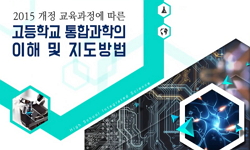Through comparative analysis of the fifth and sixth graders' science textbooks compiled by the 2009 revised curriculum, the appearance characteristics of fifth and sixth graders' science textbooks compiled by the 2015 revised curriculum, the content s...
http://chineseinput.net/에서 pinyin(병음)방식으로 중국어를 변환할 수 있습니다.
변환된 중국어를 복사하여 사용하시면 됩니다.
- 中文 을 입력하시려면 zhongwen을 입력하시고 space를누르시면됩니다.
- 北京 을 입력하시려면 beijing을 입력하시고 space를 누르시면 됩니다.

2009와 2015 개정 교육과정의 초등학교 5, 6학년 과학교과서 비교 분석 = The Comparative Analysis of the Science Textbooks of 5th and 6th grades in Elementary school between 2009 and 2015 Revised Curriculum
한글로보기https://www.riss.kr/link?id=A109536284
- 저자
- 발행기관
- 학술지명
- 권호사항
-
발행연도
2021
-
작성언어
-
- 주제어
-
등재정보
KCI등재후보
-
자료형태
학술저널
-
수록면
5-23(19쪽)
- 제공처
-
0
상세조회 -
0
다운로드
부가정보
다국어 초록 (Multilingual Abstract)
Through comparative analysis of the fifth and sixth graders' science textbooks compiled by the 2009 revised curriculum, the appearance characteristics of fifth and sixth graders' science textbooks compiled by the 2015 revised curriculum, the content system of science textbooks, and their types of illustrations and roles, the textbooks compiled by the 2015 revised curriculum can be used effectively by teachers to identify the trends in science textbooks' scientific ability development. The results of comparing and analyzing fifth and sixth graders' science textbooks for the 2009 revised curriculum and the 2015 revised curriculum are as follows. First, as a result of comparing and analyzing the appearance characteristics, the science textbook for fifth and sixth graders in 2015 was unchanged from the science textbook for the third and fourth graders of the 2009 revision, and the length of the length of the length of the length was 10mm longer, and the familiar materials encountered in the daily life of the students were composed of cover illustrations to generate knowledge and develop the quantity of the search zones. Second, as a result of comparing and analyzing the content system of science textbooks, the two areas of matter, energy, life, and earth, which are the areas of the 2009 revised curriculum, were subdivided into exercise and energy, materials, life, earth and space in the 2015 revised curriculum, and the number of fifth and sixth grade textbooks was reduced by 22 to improve students' scientific exploration capabilities for the sake of optimal learning volume. Third, the number of illustrations in the 2015 revised curriculum science and textbooks decreased compared to the number of illustrations in the 2009 revised curriculum, but the number of illustrations per page increased (+0.48). In terms of types of illustrations, the proportion of photographs in the 2009 revised curriculum science textbooks stood at 65.8 percent, but the 2015 revised curriculum edged up to 68.0 percent. Because of the nature of scientific teaching with a lot of exploratory activities, the proportion of photographic illustrations is very high and the photograph functions as an accurate and objective material than the painting. In the role of illustrations, the ratio of learning guides rose from 41.9% to 42.1%, and the most important aspect of illustrations was learning guides.
동일학술지(권/호) 다른 논문
-
남자 교대생의 규칙적 신체활동 유ㆍ무에 따른 학교생활적응, 체격, 건강체력 및 체조성 비교
- 부산교육대학교 미래교육원
- 손성원 ( Son Sung Won )
- 2021
- KCI등재후보
-
특수체육활동 프로그램이 성인 지적장애인의 지각-운동능력에 미치는 영향
- 부산교육대학교 미래교육원
- 이미영 ( Lee Mi Young )
- 2021
- KCI등재후보
-
교육대학교 통합 발전방안 연구: 거점 국립대와 교대 통합안과 권역별 교대 통합안 장단점 비교
- 부산교육대학교 미래교육원
- 이광현 ( Lee Kwang Hyun )
- 2021
- KCI등재후보
-
국립부산과학관 전시물의 특성 분석 및 초등 과학교과서 내용 관련성에 대한 연구
- 부산교육대학교 미래교육원
- 강은정 ( Kang Eun Jung )
- 2021
- KCI등재후보
분석정보
연관 공개강의(KOCW)
-

2015 개정 교육과정에 따른 고등학교 통합과학의 이해 및 지도방법
한국교육학술정보원 한국교육학술정보원 -

2015 개정 교육과정에 따른 고등학교 통합사회의 이해 및 지도방법
한국교육학술정보원 한국교육학술정보원 -

2018년 소프트웨어(SW) 교육 초등 핵심교원 연수-학생 참여 중심 소프트웨어(SW) 수업 설계를 위한 2015 개정 교육과정 이해(1부)-
한국교육학술정보원 전용주 교사(사직초등학교). -

2018년 소프트웨어(SW) 교육 초등 핵심교원 연수-학생 참여 중심 소프트웨어(SW) 수업 설계를 위한 2015 개정 교육과정 이해(2부)-
한국교육학술정보원 전용주 교사(사직초등학교). -

초등 수학 내용 전문성 향상 과정(초3~4학년군)
한국교육학술정보원 한국교육학술정보원




 KISS
KISS

